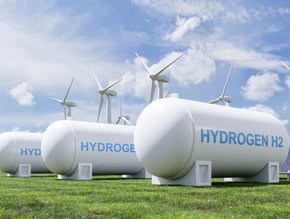Waste Heat Re-used Worldwide to Heat Public Facilities

Heat reuse boasts a multitude of benefits. For example, when rerouted, heat can be used to warm buildings which, in turn, reduces their dependency on other nearby sources — potentially fossil fuels.
But global energy crises worldwide have prompted companies, governments and countries to get more creative in how this waste heat is reutilised. With countless sectors, businesses, and institutions under threat because of this, innovative solutions to keep these areas afloat, while being conscious of the planet, have been thought up and implemented.
Data centre heat reuse for UK swimming pools
Using waste heat from data centres, for example, has been trialled to heat public swimming pools in the UK for no cost. In 2023 green tech firm Deep Green pioneered this trend so pools could reduce heating costs and the amount of carbon they use. As many as 150 could now be in line for heat from computer data processing centres after a £200 million (US$253.2m) investment by Octopus Energy into Deep Green.
“This is no longer just about pools, however,” Deep Green’s CEO Mark Bjornsgaard explained. “We have received interest from a wide range of other potential partners who could make use of our free heat, such as district heating networks.
“Placing data centres within the fabric of society transforms the waste heat they produce into a valuable resource that benefits communities. The data centre sector is rightly facing scrutiny about its growing energy demand and associated carbon emissions. Our data centres are highly energy efficient and support local communities with free heat.”
Other use cases of data centre heat reuse worldwide
At the end of last year, leading Nordic sustainable data centre operator atNorth announced an all-new heat reuse enabled mega site in Kouvola, Finland. The data centre operator’s fourth site in Finland, FIN04 is their tenth data centre in the Nordics and its fourth campus in Finland. The region is well-known for being a sustainability-conscious area, with the city promoting a circular economy based on the needs of the community.
With this in mind, atNorth is working with the city of Kouvola and KSS Energia so excess heat can be recovered and recycled and reused to benefit the wider city.
Speaking previously to sister title Data Centre Magazine, Ozgur Duzgunoglu, Design and Engineering Director at Telehouse Europe said: “With heat pumps replacing traditional boilers that rely on fossil fuels, there is an excellent opportunity to accelerate the development of heat networks and pipe infrastructure connecting data centre buildings to local communities.
“During heating, [heat pumps] can utilise excess heat to warm nearby residential blocks, schools, hospitals, business parks, shopping centres, and sports facilities. This approach presents a viable option for recycling excess heat if data centre operators collaborate with energy providers and local authorities to obtain planning permissions and create the necessary infrastructure.”
And with the data centre industry estimated to contribute 1% to 1.5% of global electricity use, there are more ways excess heat is being reused.
Across the Atlantic, data centre heat is aiding the growth of food. The University of Notre Dame in Indiana uses heat from a data centre to heat a greenhouse. Similar initiatives have been seen in Sweden with the Research Institutes of Sweden (RISE) collaborating with energy company Genesis and the Luleå University of Technology in the north of the country on a greenhouse growing microgreens hydroponically using data centre waste heat.
And in neighbouring Norway, Green Mountain has teamed up with lobster farmers to cultivate lobsters in a novel land-based operation, with heated seawater desirable to farm the crustaceans.
Over on the island of Hokkaido in Japan, warmed water is similarly being used to farm feels. The island’s White Data Centre’s cooling system expels water at a temperature of 33°C, which is the same temperature ideal for raising this particular type of fish.
*******************
Make sure you check out the latest edition of Energy Digital Magazine and also sign up to our global conference series - Sustainability LIVE 2024.
*******************
Energy Digital is a BizClik brand.






